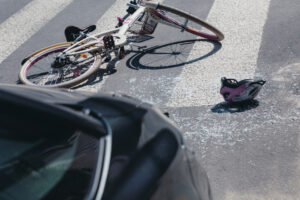Five men died in Northern California this past Tuesday, and several others suffered serious personal injuries while driving through the thick morning fog.
Officer James Smith, of the California Highway Patrol, reported that a van carrying six farm workers was broadsided by a pick-up truck east of Stockton in San Joaquin County.
Officers reported visibility of less than 100 ft at the time, and these two drivers likely couldn’t see each other in time to avoid the deadly crash.
The van was apparently attempting to cross State Route 4 when the collision occurred. Five of the six occupants of the van died, and a sixth man sustained major injuries.
From my initial review of this crash, it seems that most likely the van driver was trying to get across Highway 4 and either failed to stop for the truck on Highway 4, which had the right of way, or stopped and proceeded because he didn’t see the oncoming traffic in the fog. So, is this crash all the fault of the van driver, or should the liability be shared with the pick-up driver or others?
As a California automobile accident attorney, I often see fog related collisions, and many are sad and horrific like this one. I should point out that we live in an area where we are likely to encounter fog, and we should know how to drive in the fog. The first thing we should do in heavy fog is to slow down. Perhaps the pick-up truck driver had the right of way, however if he could not see an adequate distance because of the fog, he should not have over-driven his vision. The pick-up driver should have slowed down while his vision was impaired by fog. Even though we have the right of way, it is each driver’s duty to maintain a proper lookout for hazards on the roadway.
In California, the law is that different parties can be negligent at the same time and can both contribute to causing a collision. This theory is called comparative negligence. If the truck driver was comparatively negligent, his liability will be weighed against the liability of the van driver, and, between the two, there should be 100% accountability. This is true, even if one party is 90% at fault and the other party is only 10% at fault. A jury assesses the amount of fault for each party, the amount of damages that are fair for each injury, and the judge does the math in determining how much the survivors and the families receive. So, in this crash, there might be shared fault, particularly since it was obvious that fog was heavy enough to impair the visibility on the roadway.
This brings us to the second important issue raised by this crash. With such horrible injuries and deaths, how can there possibly be enough insurance to cover the losses of so many people? We need to look at whether the van driver, in bringing other workers to work, was driving in the course and scope of his employment. If the van driver was in the course and scope of his employment at the time of the crash, then his employer’s insurance should help to cover these losses. Generally, while we are driving to work or home from work, this is called “going and coming”. Usually employers are not liable for injuries or damages caused while their employees are commuting. The big exception to this rule is if the employee brings the car or van or truck to work for the benefit of the employer. This exception to the going and coming rule is critical to the facts presented by the above crash because if the van driver was driving the van to work, where he would transfer other workers between job sites or job locations, this van should be covered by the insurance for the van driver’s employer. Likewise, if the pick-up truck driver was bringing his truck to work and that truck was going to be used by his employer on the job, we may have access to much higher insurance.
There will be many parties in this lawsuit, and the lawyers need to sort out the potential liability of each driver, and whether the insurance of an employer can be used to help pay for the tragic losses suffered by the survivors and the families of those killed in this crash.
Hello, I’m Claude Wyle, a San Francisco automobile accident attorney. Have an idea for a topic you’d like to see covered here? Feel free to contact me or visit www.ccwlawyers.com

Claude A. Wyle is a partner of Choulos Choulos, and Wyle, a San Francisco based law firm dedicated to representing clients who have been injured by the wrongful conduct of individuals, corporations, public entities, and businesses. Mr. Wyle also frequently sits as a Judge Pro Tem for the city and county of San Francisco.










Comments for this article are closed.